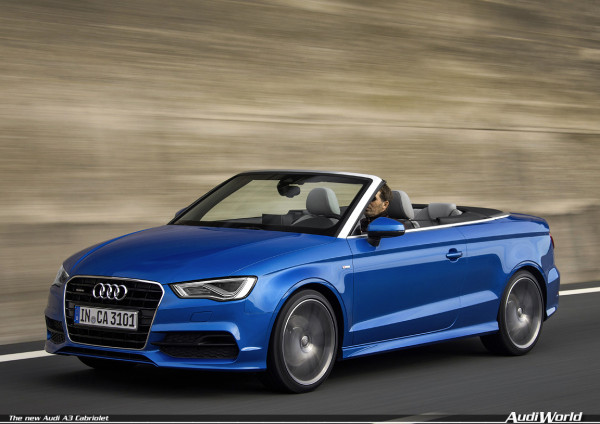Sporty, elegant and open – The new Audi A3 Cabriolet
Drivetrain
At market launch, Audi is offering the new A3 Cabriolet with two different transmissions: the 1.4 TFSI COD and 2.0 TDI have manual six-speed transmissions, while the 1.8 TFSI uses the seven-speed S tronic. Like all Audi transmissions, the manual transmission is also widely spread – the lower gears have sporty short ratios, while the highest gear has a long ratio to reduce engine speed. The six-speed manual transmission features precise shifting with short paths.
The seven-speed S tronic consists of two sub-units; two multi-plate clutches service the gears. While driving, only one sub-unit of the A3 Cabriolet is coupled to the engine at any given time, but both are continually active. For example, when the driver accelerates in third gear, the fourth gear is already engaged in the second sub-unit. The shifting process takes place by switching clutches; this takes place in just a few hundredths of a second and with no detectable interruption of propulsive power.
The seven-speed S tronic can be manually shifted too with the gear selector lever or optionally with shift paddles on the steering wheel. Revs are somewhat higher in the automatic S mode, whereas the map for D mode prioritizes longer gear ratios. When combined with the optional Audi drive select dynamic driving system (standard in the Ambition line), there is an additional “E” shifting map in the efficiency mode and a free-wheeling function that further reduces fuel consumption.
Newly developed: quattro permanent all-wheel drive
At its market launch, the new Audi A3 Cabriolet will be available with front-wheel drive; quattro permanent all-wheel drive will follow for the more powerful engines. At its core is a newly developed hydraulic multi-plate clutch with electronic control. To improve load distribution to the axles, the clutch is placed directly in front of the differential, i.e. at the end of the prop shaft.
In normal driving, the clutch transfers most of the engine’s power to the front wheels; when traction drops there, power can be variably redirected to the rear wheels within just a few milliseconds. The clutch is able to operate without the pressure reservoir that was used in the previous unit; it is considerably more compact and 1.4 kilograms (3.09 lb) lighter.

